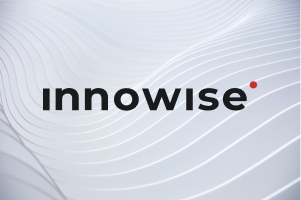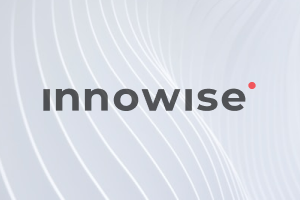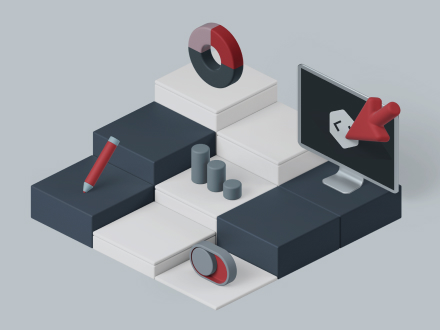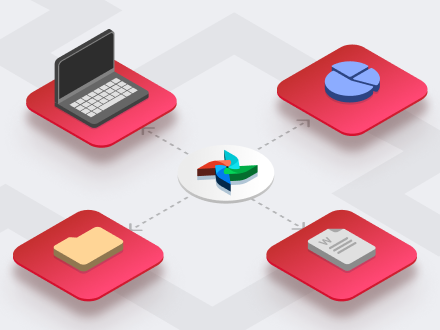Votre message a été envoyé.
Nous traiterons votre demande et vous contacterons dès que possible.
Le formulaire a été soumis avec succès.
Vous trouverez de plus amples informations dans votre boîte aux lettres.

Sélection de la langue


Vous pensez que la création d'une application d'entraînement se résume à des compteurs de pas et des chronomètres d'entraînement ? Bien que ces fonctions soient au cœur de nombreuses applications de base, les applications les plus performantes se distinguent par un mélange complexe de suivi en temps réel, de personnalisation AI, d'intégration de dispositifs portés sur soi et de sécurité des données. Et ce n'est qu'un début.
Bien sûr, il existe des modèles et des kits sans code. Mais si votre objectif est de lancer un produit, et non de le bricoler, vous aurez besoin de plus que de bonnes idées. Vous aurez besoin d'une équipe qui a fait ses preuves. Le genre qui sait comment équilibrer une interface utilisateur élégante avec la conformité HIPAA, ou comment faire évoluer un backend lorsque des milliers d'utilisateurs commencent à synchroniser leur fréquence cardiaque à 6 heures du matin.
Et ne vous y trompez pas : ce marché ne fait que s'enflammer. Le marché mondial des applications de fitness a été évalué à $1,54 milliard en 2023 et croît à un rythme de près de 18% annuel, selon Grand View Research. La demande augmente. Les attentes sont élevées. Et la concurrence est déjà féroce.
Au Innowise, nous avons aidé des startups dans le domaine de la santé et du bien-être passer du concept à l'App Store avec une réelle traction. Dans ce guide, je vous expliquerai ce qu'il faut faire pour créer une application de fitness qui fonctionne et pourquoi se lancer seul est la démarche la plus lente et la plus risquée que vous puissiez faire.
En clair, une application de fitness n'est pas seulement une bibliothèque de contenu avec quelques notifications push. C'est un atout commercial à long terme. Bien gérée, elle ancre votre marque, crée une boucle de rétroaction et devient votre fossé économique.
Abonnements, mises à niveau freemium, achats uniques, intégrations d'affiliés - la monétisation n'est pas la partie la plus difficile. Ce qui est plus difficile, c'est de la rendre durable. Une application de fitness vous offre la rare possibilité de vous adresser directement aux utilisateurs et de générer des revenus récurrents sans dépendre des publicités Instagram ou des algorithmes capricieux de la plateforme.
Mieux encore, il vous permet de fixer les prix en fonction de la valeur et non de la vanité. Offrez un véritable suivi des progrès, des plans personnalisés et des fonctionnalités connectées, et les utilisateurs paieront pour rester.
La plupart des applications sont confrontées à un taux de désabonnement. Mais la remise en forme, lorsqu'elle est personnalisée, crée des habitudes. Un utilisateur qui ouvre votre application tous les jours pour suivre ses pas ou effectuer une séance d'entraînement de 20 minutes crée une routine autour de votre produit.
Ajoutez des fonctions sociales, des défis, des étapes de progression ? Vous obtiendrez l'adhésion qui maintient le taux de désabonnement à un niveau bas et l'augmentation de la durée de vie de l'abonnement. Ce n'est pas de la théorie, c'est la recette de toutes les applications de santé les plus rentables de la boutique.
Le véritable or ? La connaissance. Chaque tapotement, chaque séance d'entraînement terminée, chaque point d'abandon vous indique ce qui fonctionne et ce qui ne fonctionne pas. Ce type de données comportementales permet aux équipes de tester rapidement les fonctionnalités, d'ajuster les flux d'accueil et de personnaliser sans deviner.
Mais cela ne s'arrête pas aux produits. Les tendances des utilisateurs peuvent influencer les partenariats (quels sont les wearables que vos utilisateurs possèdent déjà), les investissements dans le contenu (quels sont les plans qu'ils complètent le plus), ou même de nouvelles verticales (par exemple, la nutrition, la récupération, la rééducation).
"Si vous n'utilisez pas votre application pour apprendre (quelles sont les fonctionnalités qui maintiennent l'engagement des utilisateurs, où ils décrochent, quel contenu est efficace et quelles habitudes sont conservées), vous la gaspillez. Les produits de fitness les plus performants sont des postes d'écoute. Vous seriez surpris de voir à quel point les problèmes de fidélisation ne sont pas des problèmes techniques. Il s'agit de lacunes en matière de compréhension. Les données sont toutes là, il suffit d'avoir l'architecture nécessaire pour les exploiter.
Si vous êtes déjà actif dans le secteur du fitness (salles de sport, équipement, coaching, contenu), l'application devient votre porte d'entrée numérique. Pas d'intermédiaires. Pas de publicité. Juste votre marque, dans leur poche, tous les jours.
C'est le moyen le plus simple de se développer verticalement (ajout d'une nutrition), horizontalement (lancement d'une marchandise) ou globalement sans nouveaux locaux ou effectifs.
Les gens ne veulent pas seulement s'entraîner. Ils veulent se sentir à leur place. C'est là qu'intervient le véritable effet de réseau, lorsque les utilisateurs commencent à inviter des amis, à partager des étapes et à relever des défis.
Une application de fitness vous donne la possibilité de construire cette communauté sans dépendre d'un espace loué sur les médias sociaux. Et le meilleur ? Plus les gens s'engagent, plus la valeur de l'application augmente. ils générer pour vous.
Une application de fitness bien conçue devient un écosystème numérique. Vous pouvez commencer avec iOS et Android, mais ce même noyau peut alimenter un tableau de bord web pour les entraîneurs, un mode tablette pour les salles de sport, un widget smartwatch pour le suivi en déplacement, ou même des intégrations avec des téléviseurs intelligents et des casques VR pour des séances d'entraînement immersives.
Prendre Technogymun fournisseur mondial de premier plan dans le domaine du bien-être. Leur écosystème relie les applications grand public (mobiles et web), les équipements de gymnastique intelligents, les dispositifs d'évaluation et les logiciels de gestion des clubs. Toutes les données (réalisations des utilisateurs, historique des séances d'entraînement, évaluations de la santé) transitent par leur plateforme centrale.
Cela signifie qu'un utilisateur peut commencer une séance d'entraînement sur son application mobile Technogym à la maison, la poursuivre sur le tapis de course ou l'équipement de musculation dans une salle de sport partenaire, puis examiner les mesures de performance plus tard via un portail Web. Le tout sans passer d'un système à l'autre.
Ce type d'effet de levier multiplateforme n'est pas seulement agréable à avoir. C'est ce qui permet à votre produit de s'adapter aux différents parcours des utilisateurs. Courses matinales. Les pauses au bureau. Cours collectifs. Vous êtes là, là où ils ont besoin de vous.
Sur le papier, une application de fitness semble assez simple. Quelques écrans. Du contenu. Peut-être une synchronisation avec un vêtement si vous êtes ambitieux. Mais une fois que vous avez commencé à développer cette application de fitness, la simplicité s'arrête là. Les applications de fitness réussies sont un mélange de mécanismes avancés qui fonctionnent ensemble pour créer une expérience unifiée, un suivi en temps réel, des boucles de comportement de l'utilisateur et des intégrations inter-appareils.
Voici les domaines clés qui peuvent prendre les équipes au dépourvu :
Vous voulez que les utilisateurs suivent les pas, les répétitions, les calories, la fréquence cardiaque, voire le sommeil, le stress ou la VO₂ max. C'est très bien. Mais la synchronisation avec des wearables comme l'Apple Watch, Fitbit ou Garmin implique de gérer différents SDK, formats de données, contraintes de batterie et bizarreries Bluetooth.
Ajoutez à cela la variabilité de la qualité du signal, les mouvements de l'utilisateur, la précision du capteur, et essayez de faire en sorte que le tout soit homogène sur plus de 100 modèles d'appareils. Construire une telle application de suivi de la condition physique n'est pas trivial. Et ce n'est certainement pas quelque chose que vous voulez déboguer après le lancement.
Les plans personnalisés et les recommandations intelligentes semblent très bien présentés. Mais pour les faire fonctionner, vous avez besoin de données propres, structurées et significatives. Cela signifie qu'il faut planifier le suivi des événements, concevoir le bon schéma et savoir exactement comment segmenter les utilisateurs.
Si vous omettez cette réflexion dès le début, vous finirez soit par surinvestir dans l'analyse, soit, pire encore, par livrer un produit qui semblera "stupide" aux utilisateurs.
Et non, connecter ChatGPT à votre planificateur d'entraînement n'est pas considéré comme de la personnalisation. Ce n'est pas le cas lorsque la remise en forme réelle nécessite un suivi des objectifs, une progression de la charge et une modélisation de la récupération.
Si votre application traite des données de santé (ce qui est le cas de la plupart d'entre elles), vous vous trouvez en territoire réglementé. HIPAA, GDPR, les règles régionales de résidence des données - tout cela s'applique dès que vous stockez les mesures corporelles d'une personne ou l'historique de ses blessures.
L'erreur la plus fréquente ? De nombreuses équipes ajoutent la sécurité plus tard. Mais le chiffrement, le contrôle d'accès, les pistes d'audit et les flux de travail de consentement doivent faire partie de votre architecture dès le premier jour. Les adapter est un cauchemar, surtout si vous avez déjà intégré les utilisateurs.
Les applications de fitness vivent ou meurent grâce à l'expérience de l'utilisateur. Il ne s'agit pas seulement de la beauté des écrans, mais de la manière dont le flux guide l'utilisateur à travers les routines, les progrès, le retour d'information et les boucles de motivation. Si l'utilisateur a l'impression que l'un de ces éléments est lourd, accablant ou mal synchronisé avec ses attentes, il se désintéressera rapidement de l'application.
C'est particulièrement vrai pour les utilisateurs qui ne sont pas des adeptes de la gym. Ils ont besoin de clarté, d'encouragement et de simplicité, et non de tableaux de bord remplis de jargon et de mesures avancées.
Et pourtant, de nombreuses équipes conçoivent trop leur application pour les utilisateurs chevronnés. Ou bien elles copient les tendances d'autres applications qui ne correspondent pas à leur base d'utilisateurs.
L'utilisation des applications de fitness connaît des pics importants. Pensez au mois de janvier. Pensez aux lundis. Pensez à ce "défi de 30 jours" que vous venez de proposer à des milliers d'utilisateurs.
Si votre backend ne peut pas évoluer ou si vos API en temps réel commencent à traîner, vous n'êtes pas seulement lent. Vous êtes en panne. Le suivi des données n'est plus fiable. Les séances d'entraînement ne sont pas sauvegardées. La synchronisation échoue. Et le pire, c'est que les utilisateurs perdent confiance.
La dure réalité ? Les utilisateurs de fitness n'attendent pas. Si l'application se bloque pendant une séance d'entraînement, ils ne vous donneront pas une seconde chance.
La prise en charge de wearables tels que l'Apple Watch, Fitbit ou Garmin va au-delà d'une intégration ponctuelle. Chaque appareil présente ses propres particularités : instabilité du Bluetooth, problèmes de synchronisation en arrière-plan, conflits d'autorisations au niveau du système d'exploitation et modifications du micrologiciel qui interrompent votre logique du jour au lendemain.
Le véritable défi commence après le lancement. Les utilisateurs s'attendent à ce que les données soient synchronisées instantanément et de manière fiable, et si ce n'est pas le cas, c'est votre application qui est blâmée, et non l'appareil. Cela signifie que vous ne vous contentez pas de créer des fonctionnalités, mais que vous devez maintenir une connexion permanente entre votre produit et le matériel tiers que vous ne contrôlez pas.
Et si votre application dépend d'appareils spécifiques, que vous les recommandiez ou les distribuiez, vous êtes également responsable de la configuration de l'interface utilisateur, de la gestion des erreurs et de l'assistance aux utilisateurs en cas de problème.
Ainsi, même si l'intégration des dispositifs portables semble être un gain rapide, bien faire les choses signifie planifier un soutien à long terme, et pas seulement une fonctionnalité de première version.
Si vous êtes arrivé jusqu'ici, vous savez déjà qu'une application de fitness ne consiste pas seulement à afficher des exercices sur un écran. La véritable valeur réside dans l'intelligence avec laquelle elle s'adapte à l'utilisateur, dans la fluidité avec laquelle elle s'intègre à sa vie et dans la fréquence avec laquelle elle l'y ramène. Voici ce qui différencie les applications que les gens utilisent de celles qu'ils suppriment au bout de trois jours.
Tout le monde parle de "plans personnalisés", mais la plupart se contentent d'ajouter un calculateur d'IMC et de s'arrêter là. Une véritable personnalisation signifie un ajustement continu basé sur le comportement, la performance et le retour d'information de l'utilisateur, et pas seulement sur ce que l'utilisateur a sélectionné lors de l'intégration.
C'est là que AI et l'apprentissage automatique peuvent briller. Votre application doit apprendre, recommander et s'adapter. Si quelqu'un saute trois fois la journée des jambes, modifiez le programme. S'il améliore ses scores de récupération, augmentez l'intensité.
La personnalisation est une boucle : vous devez construire un moteur de retour d'information qui devient plus intelligent chaque fois que quelqu'un utilise l'application.
Les points, les badges et les classements peuvent fonctionner s'ils sont liés à un comportement qui compte. Vous voulez que les gens restent cohérents ? Récompensez les séries de points. Vous voulez qu'ils invitent des amis ? Faites-en un défi. Vous voulez qu'ils terminent un programme complet de 8 semaines ? Montrez des progrès visibles grâce à des étapes qui semblent méritées.
Mais ne vous contentez pas de copier Duolingo. La motivation pour le fitness est profondément personnelle. La meilleure ludification s'appuie sur l'identité, et pas seulement sur la vanité.
Les applications de fitness ne sont pas des réseaux sociaux. Mais le fait de permettre aux utilisateurs de partager leurs progrès ou d'inviter des amis ajoute une dose de motivation dont la plupart des gens ont besoin. Juste ce qu'il faut pour se sentir soutenu.
Même des fonctions légères comme les "défis sur invitation seulement" ou le "suivi des objectifs de groupe" peuvent entraîner une forte fidélisation. Et non, cela ne signifie pas qu'il faille créer un véritable réseau social. Il suffit de créer suffisamment de liens pour rappeler aux utilisateurs qu'ils ne sont pas seuls.
Que vous utilisiez le freemium, les abonnements ou les achats uniques, le flux de paiement doit être simple, sécurisé et rapide. Les retards ou les échecs de paiement tuent les conversions.
Et n'oubliez pas les mises à niveau. Si quelqu'un termine la quatrième semaine d'un plan gratuit, c'est le moment de lui proposer un boost premium personnalisé, et non une pop-up au moment où il ouvre l'application.
Rappel : la monétisation est un problème d'ergonomie. Si vous réussissez à trouver le bon moment, le bon message et la bonne valeur, les utilisateurs paieront. Si vous vous trompez, vous aurez l'impression qu'il s'agit d'un coup d'épée dans l'eau.
Entraînements vidéo. Entraînement audio. Minuteries intelligentes. Votre application doit diffuser ou mettre en cache ce contenu sans solliciter la bande passante de l'utilisateur ou vos serveurs.
Cela nécessite une compression intelligente, l'utilisation d'un CDN et la gestion d'une solution de repli. Surtout si votre application s'adresse à des marchés émergents ou à des voyageurs dont les connexions sont instables.
Nous avons relevé ce défi dans le cadre d'un Suite d'applications de méditation VR et iOS pour une entreprise de technologie de la santé spécialisée dans la réduction de l'anxiété et du stress. La plateforme comprenait plus de 100 méditations guidées sur mobile et VR, localisées en 7 langues et associées à des dispositifs de retour d'information basés sur l'EEG.
Pour garantir une lecture et une réactivité fluides sur les mobiles et les casques, nous avons optimisé la diffusion vidéo, assuré des interactions à faible latence et pris en charge l'intégration avec des appareils Bluetooth économes en énergie - tout en maintenant une interface utilisateur cohérente quelle que soit la qualité de la connexion.
Cela dépend. Il n'y a pas de pile parfaite, il n'y a que des compromis. Si vous créez une application de fitness, vos décisions techniques détermineront tout, du délai de mise sur le marché à la mise à l'échelle à long terme. La meilleure question à se poser est donc la suivante : pour quoi optimisez-vous ?
Voici comment je procède.
Si votre application a besoin d'animations fluides, d'une intégration étroite avec des appareils portables ou d'un suivi en temps réel, optez pour la technologie native. Swift (iOS) et Kotlin (Android) vous offrent un contrôle total et de meilleures performances. Période.
Ceci est particulièrement important pour les applications avancées de suivi de la condition physique : tout ce qui implique des capteurs, des données en arrière-plan ou des interactions complexes avec l'interface utilisateur.
Des cadres tels que React Native et Flutter sont parfaits si vous lancez rapidement et souhaitez couvrir à la fois iOS et Android avec une seule base de code. Mais attention : dès que vous commencez à personnaliser chaque plateforme, la complexité s'installe.
Vous économiserez du temps au début, mais préparez-vous à dépenser plus pour l'entretien à long terme si vous ne fixez pas des limites claires dès le départ.
J'ai vu des équipes essayer de créer un "MVP rapide" en Flutter, pour ensuite en réécrire de grandes parties lorsque les performances des capteurs ou les bégaiements des animations ne suffisaient plus. Bon outil, mauvais travail.
Chaque appareil parle sa propre langue. Apple HealthKit. Google Fit. SDK Fitbit. Garmin Connect. Ils ont tous des API, des schémas de données et des comportements de synchronisation différents. Et aucun d'entre eux ne gère les cas limites de la même manière.
Ainsi, si vous créez une application de suivi de la condition physique qui communique avec plusieurs appareils portables, votre pile doit en tenir compte dès le départ. Cela signifie des couches de synchronisation structurées, une gestion des tâches en arrière-plan et des mécanismes de repli lorsque le Bluetooth tombe en panne.
Nous recommandons généralement de commencer par Node.js ou Python pour plus de flexibilité, associé à PostgreSQL pour les données relationnelles ou MongoDB pour les journaux et les événements non structurés. Mise en cache via Redis. REST ou GraphQL, en fonction de l'interactivité de l'interface utilisateur.
Qu'est-ce qui compte plus que les outils ? L'architecture. Un monolithe propre vaut mieux qu'un microservice désordonné, surtout au stade du MVP.
Nous avons reconstruit des applications qui se sont effondrées sous le poids de backends "modulaires" que personne ne pouvait réellement maintenir. Ne courez pas après les tendances en matière d'architecture. Construisez ce que vous pouvez clairement faire évoluer.
Votre application doit évoluer en fonction des pics d'utilisation, et non lorsque votre équipe en a le temps. Cela signifie qu'il faut choisir le bon fournisseur de services en nuage (AWS, Azure, GCP) et l'utilisation judicieuse des services gérés.
Laissez tomber Kubernetes à moins que vous ne sachiez que vous en avez besoin. Au stade du développement du MVP, la simplicité l'emporte. Veillez simplement à ne pas vous mettre dans une situation inextricable.
Voici comment votre application de fitness passe de l'idée au lancement. Si vous imaginez une ligne droite entre la maquette et l'App Store, arrêtez-vous. Développement d'applications de fitness relève à la fois de la conception de produit, du marathon technique et de la psychologie de l'utilisateur. Voici à quoi ressemble le processus lorsqu'il est bien fait
Avant qu'un seul écran ne soit maquetté, nous creusons en profondeur :
Sans cette base, vous risquez de construire une bonne solution pour un mauvais problème. Vous n'avez pas besoin de 10 000 fonctionnalités. Vous avez besoin de 3 choses que les gens utiliseront régulièrement.
Vous ne pouvez pas tout construire en même temps. C'est là qu'intervient la portée intelligente. Nous mettons en correspondance vos objectifs et les flux d'utilisateurs, nous identifions les chemin critiqueet d'isoler les fonctionnalités qui doivent être expédiées en premier.
C'est là que les fondateurs ont souvent besoin d'entendre des vérités difficiles :
Nous ne tuons pas les idées. Nous les mettons en phase. L'objectif est de lancer quelque chose de ciblé, d'utile et d'extensible, et non un MVP boursouflé qui essaie de tout faire et de ne rien faire.
Une bonne interface utilisateur ne se résume pas à des écrans esthétiques. Il s'agit de flux intuitifs, accessibles et gratifiants, en particulier pour les personnes soumises à des contraintes physiques ou cognitives. Il s'agit notamment des utilisateurs en pleine séance d'entraînement, qui se remettent d'une blessure ou qui naviguent sur un écran avec une dextérité, une ouïe ou une vision limitées.
Concevoir une application de fitness implique de réfléchir :
Nous réalisons des prototypes très tôt, nous les testons avec des utilisateurs réels (ou leurs mandataires les plus proches), et nous procédons à des itérations rapides. Au moment du développement, la conception a été soumise à des tests de résistance pour les éléments suivants l'utilisabilité dans le monde réel.
C'est ici que le code se produit, mais il ne s'agit pas seulement de "construire les écrans". Nos équipes travaillent en parallèle :
Nous travaillons par sprints, mais nous travaillons aussi à rebours à partir de jalons : quand faut-il une version bêta ? Quand faut-il soumettre le produit à l'App Store ? Nous planifions en conséquence.
Et oui, nous écrivons des tests. Unité, intégration, API, interface utilisateur. Parce qu'il est évident que vous ne voulez pas d'un bug de synchronisation le jour du lancement.
Notre équipe d'assurance qualité ne se contente pas de "cliquer". Elle simule une mauvaise connexion Wi-Fi. Elle force la fermeture de l'application pendant une synchronisation. Ils simulent un signal vestimentaire corrompu. Elle teste les cas limites et les modèles d'utilisation bizarres - ceux qui se produiront absolument lorsque votre application sera en ligne.
C'est également à ce moment-là que nous testons vos flux sur des appareils réels. Android 13 sur un Pixel se comporte différemment d'Android 11 sur un Samsung. Si vous sautez cette étape, vous le découvrirez à vos dépens.
Une fois l'application stable, nous nous occupons de la soumettre à l'App Store et à Google Play et nous préparons la suite.
Il s'agit notamment de
Nous travaillons également avec votre équipe sur la mise sur le marché :
Un lancement sans pipeline d'utilisateurs est juste... un repo en direct. Nous nous assurons que vous ne vous contentez pas de lancer, mais que vous lancez avec un plan.
Soyons clairs : oui, vous pouvez essayer de créer votre application de fitness avec des freelances ou une équipe interne. Mais à moins que vous ne disposiez déjà d'ingénieurs chevronnés, d'un chef de produit, d'un responsable de l'assurance qualité, d'un concepteur et d'un spécialiste DevOps, vous finirez de toute façon par externaliser. Probablement après quelques échéances manquées et une réécriture.
Voici pourquoi les fondateurs avisés évitent cette peine et font appel à une équipe qui connaît déjà le terrain.
Recruter des développeurs mobiles de haut niveau prend des mois, en supposant que vous sachiez ce que vous recherchez. Ajoutez maintenant des experts en intégration de wearables, un concepteur UX qui comprend réellement les flux de fitness, des ingénieurs backend capables d'architecturer pour l'échelle, et quelqu'un pour gérer le tout ?
Ou alors, vous pouvez faire appel à une équipe qui a déjà fourni des applications de santé et de bien-être et passer directement à la construction.
La vitesse est importante. Mais c'est la rapidité associée à la structure qui vous permet d'accéder au marché et d'y rester. Lorsque vous travaillez avec une équipe qui l'a déjà fait, vous évitez les semaines de paralysie décisionnelle concernant les cadres, les intégrations et les outils.
Vous obtenez :
En bref : vous obtenez la vélocité sans le chaos.
L'externalisation vous offre la transparence des coûts et la flexibilité. Vous connaissez vos coûts. Vous pouvez augmenter la cadence pour les nouvelles fonctionnalités et la réduire en cas de besoin, sans avoir à licencier du personnel à temps plein ou à vous battre pour obtenir des effectifs supplémentaires.
Et lorsque vous êtes prêt à passer à l'échelle supérieure (peut-être en lançant une application web, en élargissant votre offre aux formateurs ou aux cliniques, ou en ajoutant un composant VR), vous ne partez pas de zéro. Vous disposez d'une équipe capable de pivoter avec vous.
Exigences de conformité non respectées. Synchronisation vestimentaire défectueuse. Une interface utilisateur qui nuit à la fidélisation. Il ne s'agit pas de petits problèmes, mais de problèmes qui affectent l'activité de l'entreprise. Travailler avec une équipe qui les a déjà résolus ? C'est l'atténuation des risques intégrée.
Vous ne payez pas seulement pour des heures, vous payez pour des certitudes. La certitude que ce que vous construisez est viable et stable.
Si vous pensez que le développement d'une application s'arrête au lancement, vous ne créez pas une application de fitness, mais une expérience à court terme. La vérité ? C'est après le lancement que les gagnants tirent leur épingle du jeu. Le marché évolue rapidement, les attentes des utilisateurs changent et les bugs ne se soucient pas de votre feuille de route.
Voici comment les applications réelles restent compétitives après leur mise en ligne.
Les utilisateurs de fitness sont fidèles jusqu'à vous cessez d'évoluer. Si vous ne publiez pas de mises à jour régulières (correction des bogues, ajout de nouvelles fonctionnalités, optimisation des flux d'accueil), les utilisateurs penseront que votre application est morte.
Chez Innowise, nous prévoyons généralement des cycles de publication bihebdomadaires après le lancement. Certaines semaines sont consacrées à la correction de bogues, à l'amélioration des performances et à la mise au point de cas particuliers. D'autres semaines, nous nous concentrons sur les fonctionnalités demandées par les utilisateurs, la mise au point de l'interface utilisateur ou les améliorations en coulisses. L'essentiel est que des mises à jour régulières et significatives fassent progresser le produit et maintiennent l'engagement des utilisateurs.
Les meilleures informations post-lancement ne proviennent pas des tableaux de bord analytiques, mais des utilisateurs. Mais seulement si vous êtes à l'écoute.
Si nécessaire, nous l'intégrons :
Pourquoi ? Parce que la frustration des utilisateurs coûte cher. Si quelque chose n'est pas clair, cassé ou sous-utilisé, vous voulez le savoir avant que cela ne se traduise par un taux de désabonnement.
Bien sûr, votre backend doit s'adapter aux pics d'utilisation, mais il ne s'agit que d'une seule couche.
Une véritable mise à l'échelle signifie :
Il n'est pas nécessaire de mettre tout cela en place dès le premier jour. Mais vous faire ont besoin d'une équipe qui construit en gardant à l'esprit l'optionnalité. C'est la différence entre un MVP et une plateforme.
En bref, la création d'une application de fitness de qualité commence généralement par les éléments suivants $60K–$100K pour un MVP riche en fonctionnalités, et peut s'étendre jusqu'à $200K+ si vous ajoutez AI, des intégrations wearable, une prise en charge multiplateforme ou la diffusion de contenu riche.
Mais la meilleure question à se poser est la suivante : qu'est-ce qui motive ce coût, et où va votre argent ?
Je vais les présenter dans un tableau.
| Phase | Fourchette de coûts estimée | Environ heures | Ce qui est inclus |
| Découverte et stratégie | $5K-$15K | 40-80 heures | Études de marché, profils d'utilisateurs, hiérarchisation des fonctionnalités, planification technique |
| UX/UI design | $8K-$20K | 80-160 heures | Flux d'utilisateurs, conception visuelle, prototypage, logique d'interaction |
| Développement mobile (iOS/Android) | $30K–$100K+ | 480-960 heures | Fonctionnalité de base, synchronisation des vêtements, suivi des données, paiements, notifications push |
| Développement du backend | $20K–$50K | 320-600 heures | Développement d'API, stockage de données, authentification, planification de l'évolutivité |
| QA et tests | $5K-$15K | 80-160 heures (en parallèle) | Tests manuels/automatisés, corrections de bogues, tests d'appareils |
| DevOps et infrastructure | $5K-$10K | 40-80 heures (en parallèle) | Mise en place de CI/CD, surveillance, configuration de l'hébergement en nuage |
| Soutien après le lancement (3 mois) | $10K–$25K | En cours après le lancement | Mises à jour, correctifs, optimisation des analyses, transfert de l'assistance |
Ces fourchettes constituent un point de départ général. Les petites applications aux fonctionnalités limitées peuvent coûter moins cher, tandis que les applications plus complexes (en particulier celles qui comportent des intégrations avancées, des fonctions AI ou une synchronisation matérielle) peuvent dépasser largement la fourchette supérieure.
Bien entendu, le coût total dépend ce que que vous créez. Voici un aperçu du temps et du budget que requièrent généralement les différentes fonctionnalités d'une application de fitness, afin que vous puissiez définir vos priorités avec plus de précision.
Voici une estimation approximative des délais et des coûts :
| Fonctionnalité | Temps de développement estimé | Coût estimé |
| Suivi des séances d'entraînement (plans personnalisés + historique) | 3-4 semaines (120-160 heures) | $8K-$15K |
| Intégration de dispositifs portables (Apple Health / Google Fit) | 2-3 semaines (80-120 heures) | $6K-$12K |
| Plans nutritionnels et enregistrement des repas | 3-5 semaines (120-200 heures) | $10K–$18K |
| Gamification (badges, séries, défis) | 2-4 semaines (80-160 heures) | $6K-$14K |
| Fonctionnalités sociales/communautaires (amis, invitations, classements) | 3-6 semaines (120-240 heures) | $10K–$20K |
| Intégration de paiements sécurisés (Stripe/Apple Pay) | 1 à 2 semaines (40 à 80 heures) | $4K-$8K |
| Diffusion de contenus d'entraînement audio/vidéo | 2-3 semaines (80-120 heures) | $6K-$12K |
| Recommandations basées sur AI (moteur de règles de base + architecture prête à l'emploi) | 2-4 semaines (80-160 heures) | $8K-$16K |
S'il y a une chose que je dis toujours à mes clients, c'est ceci : ne laissez pas une interface élégante vous distraire de ce qui fait vivre l'application. A un backend solide et une architecture bien pensée ne sont pas négociables. Si votre application ne peut pas évoluer, se synchroniser de manière fiable ou gérer les données des utilisateurs sous pression, aucune refonte ne la sauvera ; elle ne fera que paraître belle tout en se cassant la figure.
Il en va de même pour essais. Dans les applications de fitness, la confiance est fragile. Un simple bogue qui réinitialise la série d'un utilisateur ou qui entraîne la perte de sa progression n'est pas seulement un inconvénient, c'est une raison de désinstaller l'application. Vous devez détecter ces problèmes avant que vos utilisateurs ne le fassent, et non pas après qu'ils aient publié un commentaire 1 étoile.
Enfin, ne considérez pas le lancement comme la ligne d'arrivée. Vous aurez besoin d'un budget post-lancement - minimum 15-20% de votre version initiale - pour envoyer des mises à jour, répondre à l'utilisation réelle et maintenir l'application compétitive. En effet, quelle que soit la qualité de votre planification, vos utilisateurs vous surprendront. Et vous devrez agir rapidement lorsqu'ils le feront.
Oui, mais seulement si vous travaillez avec une équipe qui a déjà créé des applications de fitness ou de santé. Sinon, vous payez moins cher par heure pour dépenser plus par fonction à long terme.
Chez Innowise, nous avons aidé des clients :
Une application de fitness bien conçue s'intègre au rythme quotidien de l'utilisateur - un outil sur lequel il s'appuie pour rester cohérent, suivre ses progrès et atteindre ses objectifs. Ce type d'impact n'est pas le fruit du hasard. Il est le fruit d'objectifs clairs, de choix intelligents et d'une équipe qui sait comment transformer des idées complexes en expériences soignées.
Avec la bonne technologie, une feuille de route ciblée et une exécution éprouvée, votre application peut être lancée en force, évoluer en douceur et se démarquer sur un marché encombré. Chaque fonctionnalité, chaque flux, chaque mise à jour est conçu dans un but précis.
Chez Innowise, nous vous aidons à créer une application de fitness qui s'expédie rapidement, s'adapte proprement et fait revenir les utilisateurs. Prêt quand vous l'êtes.

Chef du service mobile
Eugene dirige notre vision mobile avec un œil aiguisé sur la performance, la facilité d'utilisation et la technologie à l'épreuve du temps. Il aide les entreprises à transformer leurs grandes idées en applications rapides et intuitives que les gens ont envie d'utiliser.












Votre message a été envoyé.
Nous traiterons votre demande et vous contacterons dès que possible.

En vous inscrivant, vous acceptez notre Politique de confidentialitéy compris l'utilisation de cookies et le transfert de vos informations personnelles.